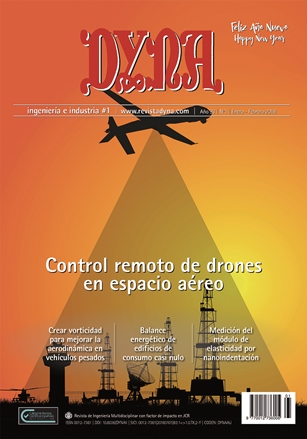INSTRUMENTED NANOINDENTATION EVALUATION OF YOUNG'S MODULUS ALTERATIONS CAUSED BY INDUCED RESIDUAL STRESS FIELDS
Keywords:
Nanoindentación, Esfuerzos rediduales, Metodo de Oliver-Parr, Metodo de respuesta de grieta, Modulo de Young, Nanoindentation, Residual Stresses, Oliver-Parr Method, Crack compliance method, Young modulus.Abstract
This work evaluates the alteration of Young’s modulus caused by the induction of residual stress fields in a set of SAE 1045 Steel specimens, in which the measurements were carried with instrumented nanoindentation. First, the specimens were subjected to a stress relief to eliminate prior history. Previous residual stresses are accumulated with the ones generated during manufacturing processes, this accumulation of residual stresses may produce sudden failures. After the stress relief process, the specimens were subjected to the induction of residual stress by applying a controlled bending load and the magnitudes of the stresses were measured with the Crack Compliance Method (CCM). Finally, measurements of the Young modulus alterations were performed with instrumented nanoindentation by using a Berkovich nanoindenter and following the Oliver-Parr method. A differential segment was extracted from the centre of the beam which contains the same stress field distribution as it was also demonstrated with a numerical analysis carried in ANSYS®. A total of four cases were analysed considering: a) Non previous history, b) with the induction of residual stress, c) with the application of the Bauschinger effect and d) with the induction of residual stresses plus the application of the Bauschinger effect. Differences between Young´s modulus and surface hardness values were found for each case showing the effect of the induced residual stress in the specimens.Downloads
Published
2018-01-01
Issue
Section
ARTICULOS

